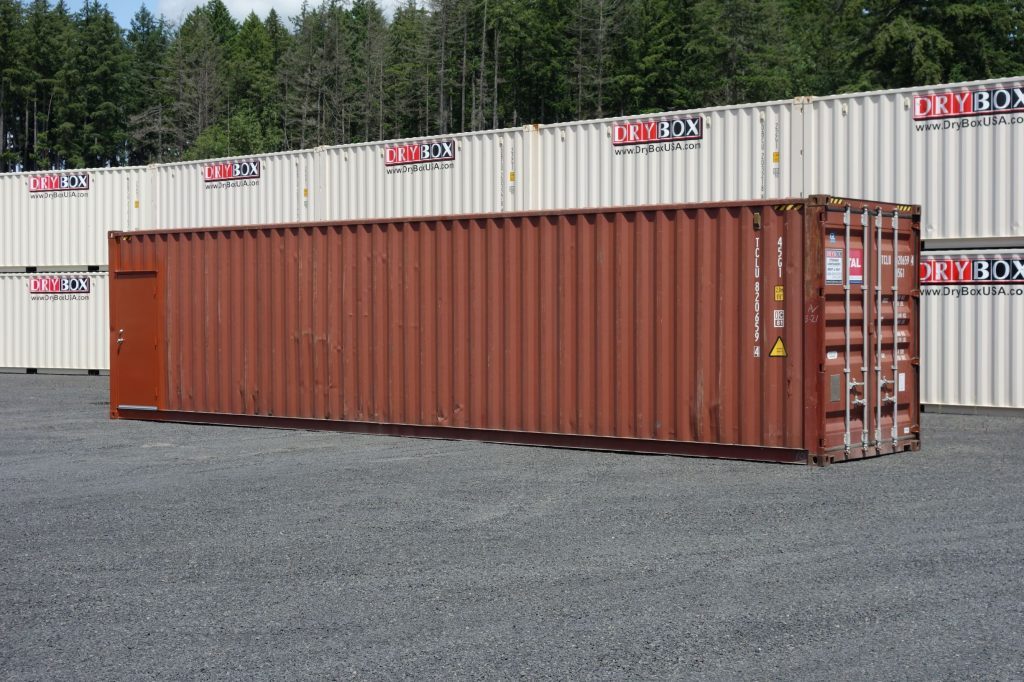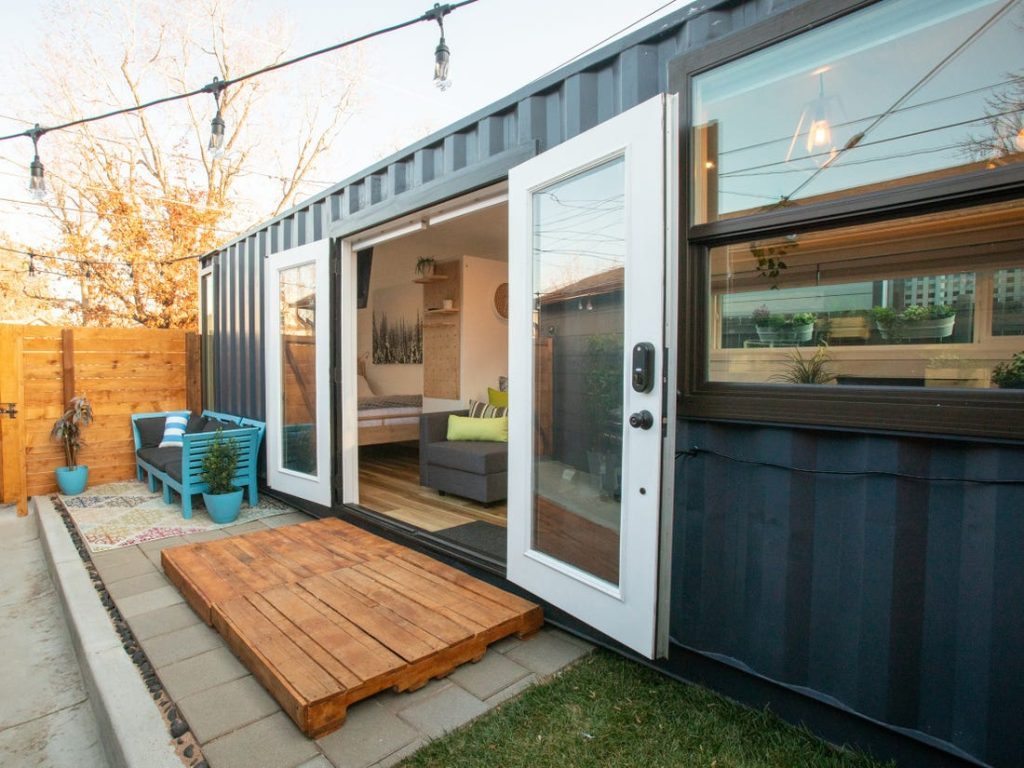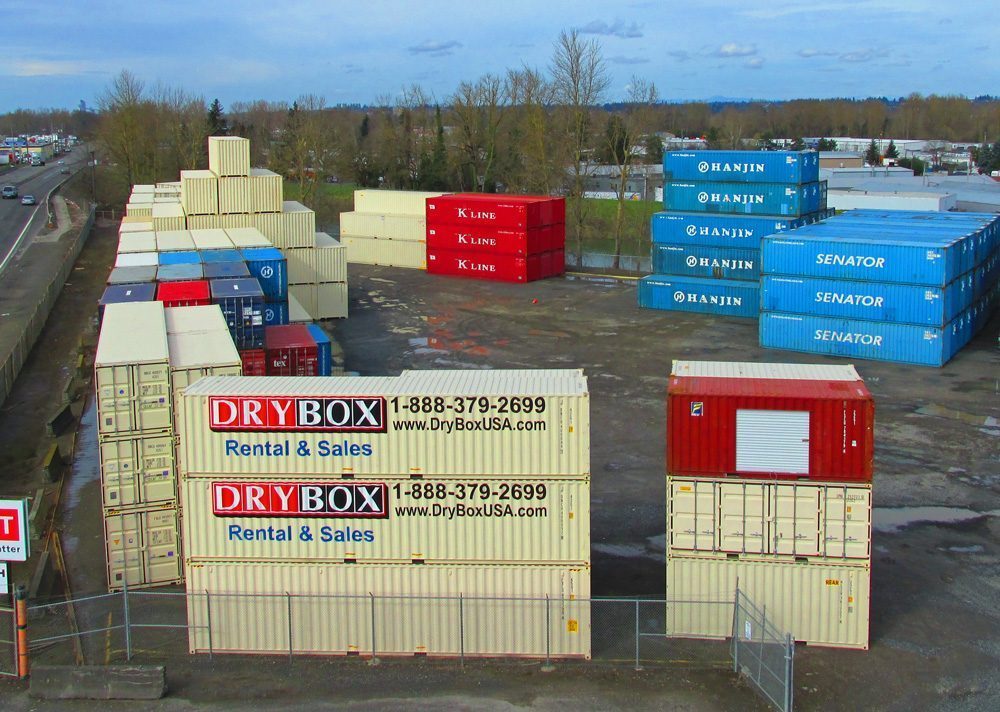Shipping Container Lifecycle: From New to Used and Beyond
If you’ve ever thought about investing in a shipping container, you might wonder how long it lasts or what it can be used for after its shipping days are over. The shipping container lifecycle includes many stages, and they often find new purposes long after their time in shipping ends.
From their sturdy construction to their practical versatility, it’s safe to say that shipping containers are an investment that can serve a variety of uses over time.
In this article, we’ll take a closer look at the lifecycle of shipping containers. We’ll explore how they are made, their role in global trade, and the creative ways people use them after they retire from moving goods from one place to another.

A Brief History: How Shipping Containers Came to Be
The use of shipping containers dates back to the 1950s, thanks to trucker and American entrepreneur Malcolm McLean. McLean had a breakthrough idea while working in the transportation and trucking business. He realized the need for a more efficient way to ship goods and designed trailers that could be easily lifted and placed on a ship.
Determined to bring his idea to life, McLean secured a loan and started his container ship business.
This led to the launch of the “Ideal X,” the world’s first container ship, which sailed from Port Newark, New Jersey, to Houston. In 1968, the International Standards Organisation approved McLean’s design as the standard: containers measuring 20 feet long, 8 feet high, and 8 feet wide. The “Ideal X” carried just 58 containers then, but now, modern container ships can carry around 20,000 TEU containers.
For over seven decades, the shipping container industry has thrived, and today, people have found creative new ways to use these durable containers, particularly in regions like the Pacific Northwest.
How Long Do Shipping Containers Usually Last?
On average, a used container lasts 10–12 years in active service at sea. After retirement from shipping, its lifespan can extend significantly when repurposed for other uses. With proper maintenance and care, a shipping container can last 25 years or even longer, so it’s definitely a highly reliable and long-term investment.
What are the Stages of a Shipping Container Lifecycle?
The lifecycle of a shipping container includes three stages: manufacturing, transportation, and repurposing. Let’s take a closer look into each of them:
Stage 1: Construction of Shipping Containers
Most shipping containers are built in China, where skilled workers produce them at a lower cost compared to other countries. The process starts with making steel panels, assembling them into strong containers, and adding features like doors, floors, and protective coatings. Each container gets a unique number to track its journey, identify what it carries, and show its destination.
New containers, often called “one-trip” containers, are sent to markets like the United States and Europe. These containers are sold to shipping companies for their first use in moving goods.
Stage 2: Transportation from Shipyard to Final Destination
After they are made, containers are transported by ship, train, or truck. They are secured with locking cones and lashing bars to keep them stable during travel. At the port, containers are unloaded, stacked, and stored until they are ready to be picked up.
Trucks pick up containers based on their unique numbers. Before leaving the port, the loaded trucks are weighed to make sure the containers meet safety limits. Containers are then taken to their destination, unloaded, and prepared for their next shipment.
Stage 3: Post-Shipping Usage and Repurposing
When shipping containers are no longer used for transport, they are often sold and repurposed for new uses. Their strong design, low cost, and easy customization make them perfect for creative projects.
Old containers can become homes, offices, restaurants, storage units, swimming pools, or even vacation houses. With some creativity, these steel boxes can be turned into almost anything.

Common Repurposes of Shipping Containers
Shipping containers are incredibly versatile and can be used in many creative and practical ways once they are retired from shipping. Here are some of the most common ways people repurpose shipping containers:
1. Homes
Containers are often turned into affordable and eco-friendly housing. They can be stacked, combined, or customized to create modern, unique living spaces.
2. Offices
Businesses use shipping container offices as workspaces, especially in areas where traditional office buildings are not practical or affordable.
3. Storage Units
Containers are ideal for secure storage. They are weatherproof and sturdy, making them perfect for storing tools, equipment, or household items.
4. Pop-Up Shops and Cafes
Entrepreneurs use containers to set up temporary or mobile businesses. They are easy to transport, making them great for food trucks, retail spaces, or markets.
5. Art Installations
Containers have been used as the foundation for large-scale art projects, such as galleries or interactive exhibits. Their industrial look adds a creative touch to modern art spaces.
6. Swimming Pools
With some modifications, containers can be transformed into stylish, above-ground swimming pools. They are cost-effective compared to traditional pool installations.
7. Classrooms and Community Centers
Containers have been repurposed as classrooms or community hubs in areas that need affordable and quick construction solutions.
8. Disaster Relief Shelters
Their durability and portability make containers excellent for emergency housing in disaster-hit regions.
9. Hotels or Vacation Rentals
Many companies are using shipping containers to build unique vacation rentals or boutique hotels, offering guests a modern and sustainable experience.
10. Workshops and Studios
Containers are converted into workshops or creative studios for artists, woodworkers, and other professionals who need a dedicated space.

Conclusion
Shipping containers have proven to be much more than tools for transporting goods.
Their durability, adaptability, and long lifespan make them a valuable investment that can serve a wide range of purposes, even long after their shipping days are over. From homes and offices to art installations and swimming pools, the possibilities for repurposing shipping containers are endless.
If you’re considering using a shipping container for your own needs, keep in mind that they can be modified to fit your specific requirements. You can add doors, windows, insulation, or any other custom features to make them suitable for your project!
Start Your Next Container Project Today with Dry Box
Looking for high-quality shipping containers for your next project? Dry Box offers a wide range of container sizes designed to suit any need. Whether you’re building a home, setting up an office, or creating something unique, our containers are durable, secure, and customizable to fit your vision.
Contact us today to explore your options and find the perfect container for your project. Let us help you bring your ideas to life with a container solution that’s built to last.









